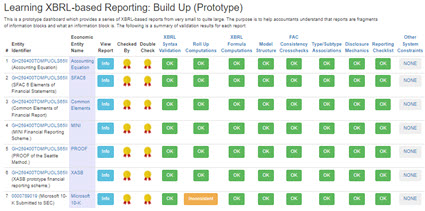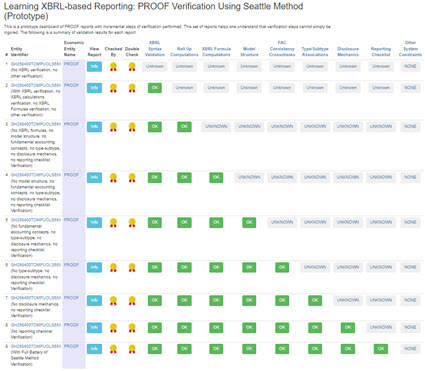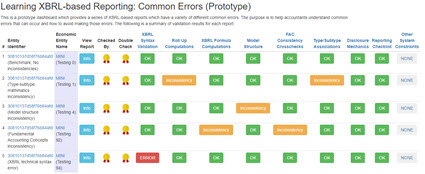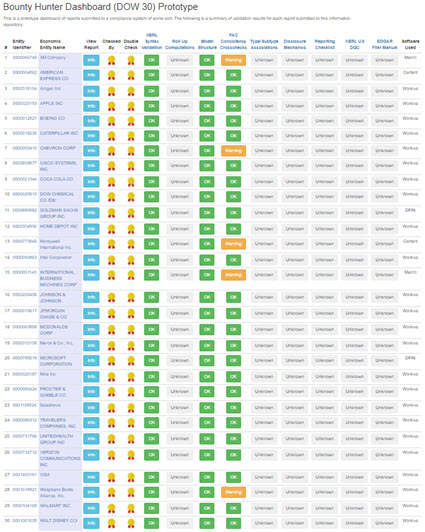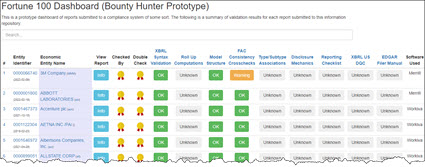The following sets of examples are helpful in understanding and learning XBRL-based digital financial reporting. The best practices/good practices outlined by the Seattle Method are the basis for these examples.
This set of reports first walks you through very small reports and then increases the size of the report. It helps you see and understand that reports are made up of many logical fragments.
This set of reports helps you see and understand the importance of and the need for specific verification tasks to be performed in order to be sure an XBRL-based report is verifiably properly functioning.
This set of reports shows you common errors that are made when creating XBRL-based financial reports and how those error are detected using sound procedures and good software tools. (much more coming soon)
DOW 30: (complete)
This set of reports helps you recognize that every report, even for the biggest companies in the world, follow the above dynamics.
Fortune 100 (Work in progress)
ESEF (European Single Electronic Format): (work in progress)
All of these and more examples can be downloaded here with documentation which shows you how to run the verification using Pacioli. To take your skills to the next level, try Essentials of XBRL-based Digital Financial Reporting. Then, look through these high-quality examples of errors. For even more details, see these high-quality explanations of errors in XBRL-based reports.
